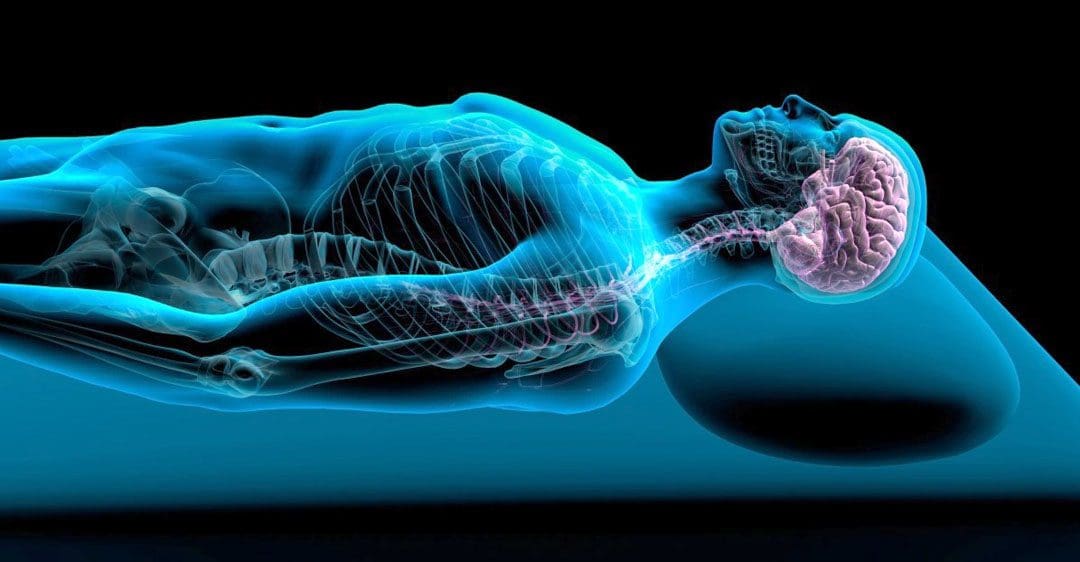10 Foods For Optimal Energy & Vitamins: A Complete Guide To Support Spinal Health
Uncover the connection between foods and vitamins for spinal health while enhancing your flexibility, strength, and mobility.
Chiropractic Care and Nutrition: A Holistic Approach to Reducing Musculoskeletal Pain and Boosting Bone Health
Imagine your spine as the sturdy backbone of a skyscraper—literally and figuratively holding you up, keeping you balanced, and letting you move through life with confidence. Now, picture that skyscraper wobbling because of a shaky foundation or poor maintenance. That’s what happens when your musculoskeletal system, especially your spine, isn’t supported properly. Musculoskeletal pain, particularly in the spine, can feel like a wrecking ball to your daily routine, and weak bones can make you feel like that skyscraper is one gust of wind away from trouble. But here’s the good news: chiropractic care, paired with the right foods and vitamins, can act like a top-notch construction crew, reinforcing your body’s foundation, reducing pain, and boosting bone health. In this blog post, we’ll dive into the clinical rationale behind why chiropractic care, healthy nutrition, and essential vitamins are a dream team for tackling spine-related pain and improving overall wellness, with insights from Dr. Alexander Jimenez, DC, APRN, FNP-BC, a leading chiropractor and nurse practitioner in El Paso, Texas. Plus, we’ll sprinkle in a bit of humor to keep things light—because who said health can’t be fun? Let’s get started!
The Musculoskeletal System and Spine: The Body’s Support Structure
Your musculoskeletal system is like the scaffolding of that skyscraper we mentioned. It’s made up of bones, muscles, ligaments, tendons, and connective tissues that work together to give your body structure, movement, and stability (Jimenez, 2024). The spine, or vertebral column, is the central pillar of this system, housing the spinal cord and acting as the main highway for nerve signals between your brain and the rest of your body. When the spine is misaligned or stressed—whether from poor posture, injury, or lifestyle factors—it can lead to musculoskeletal pain, reduced mobility, and even systemic health issues.
Think of your spine as a stack of building blocks. If one block is slightly off, the whole stack can wobble, causing pain and dysfunction. Conditions like sciatica (pain radiating down the leg due to nerve compression), herniated discs, or subluxations (misalignments of the vertebrae) can throw your body out of whack. For example, approximately 90% of sciatica cases are caused by a spinal disc herniation compressing a spinal nerve (Jimenez, 2018). Other issues, like scoliosis or chronic low back pain, can also disrupt the spine’s harmony, leading to discomfort that feels like a constant thorn in your side—or rather, your back.
Chiropractic care steps in like a skilled architect, using spinal adjustments, manual manipulations, and other non-invasive techniques to realign those blocks and restore balance. Dr. Alexander Jimenez, a seasoned chiropractor and nurse practitioner, emphasizes that chiropractic care focuses on correcting these misalignments to reduce nerve compression, alleviate pain, and enhance mobility (Jimenez, 2024). But here’s where it gets even better: pairing chiropractic care with proper nutrition and vitamins can supercharge your body’s ability to heal and stay strong. It’s like giving your construction crew the best materials to work with—think premium steel and concrete instead of flimsy cardboard.
References
- Jimenez, A. (2018, November 21). Sciatica treatment | El Paso, TX (Chiropractor) [Video]. DrAlexJimenez.com. https://dralexjimenez.com
- Jimenez, A. (2024). Injury Medical & Chiropractic Clinic. DrAlexJimenez.com. https://www.a4m.com/alex-jimenez-injury-medical-amp-chiropractic-clinic-el-paso-tx.html
Why Chiropractic Care Works for Musculoskeletal Pain
Chiropractic care is like the superhero of non-invasive treatments, swooping in to save the day without surgery or heavy medications. It focuses on the diagnosis, treatment, and prevention of musculoskeletal and nervous system disorders, particularly those affecting the spine. Dr. Jimenez, with over 25 years of experience, uses evidence-based techniques like spinal decompression, manual adjustments, and functional rehabilitation to address conditions such as sciatica, herniated discs, and chronic neck or back pain (Jimenez, 2024).
Here’s the clinical rationale: when your spine is misaligned, it can irritate nerves, strain muscles, and stress joints, leading to pain and reduced function. For instance, a herniated disc can press on a spinal nerve, causing shooting pain down the leg (sciatica). Chiropractic adjustments work by gently realigning the spine, reducing nerve compression, and restoring proper joint function. A clinical study on chiropractic care for migraines showed that spinal adjustments can reduce symptoms by correcting misalignments and easing nerve irritation (Jimenez, n.d.). It’s like fixing a kink in a garden hose—once the blockage is cleared, water (or in this case, nerve signals) flows freely again.
Dr. Jimenez’s dual licensure as a chiropractor and nurse practitioner gives him a unique edge. He combines biomechanical expertise with medical diagnostics, using advanced imaging like MRIs and CT scans to pinpoint the exact cause of pain (Jimenez, 2024). This “dual-scope” approach ensures that treatments are precise and tailored to each patient’s needs. For example, if you’ve been in a car accident (more on that later), Dr. Jimenez can use motion studies and neurological testing to identify subtle dysfunctions that might not show up in standard exams. It’s like having a detective and a doctor rolled into one, solving the mystery of your pain with science and skill.
But chiropractic care isn’t just about cracking backs (don’t worry, it’s gentler than it sounds!). It’s about restoring your body’s natural ability to heal. By improving spinal alignment, chiropractic care enhances blood flow, reduces inflammation, and promotes tissue repair. And when you add nutrition into the mix, you’re giving your body the fuel it needs to make those repairs faster and stronger. Let’s dive into how food and vitamins play a starring role in this process.
References
- Jimenez, A. (n.d.). Chiropractic care effectiveness for five musculoskeletal issues. DrAlexJimenez.com. https://dralexjimenez.com/chiropractic-care-effectiveness-for-five-musculoskeletal-issues/
- Jimenez, A. (2024). Injury Medical & Chiropractic Clinic. DrAlexJimenez.com. https://www.a4m.com/alex-jimenez-injury-medical-amp-chiropractic-clinic-el-paso-tx.html
The Role of Nutrition in Spine Health and Pain Reduction
If your body is a construction site, then food and vitamins are the raw materials that keep the workers (your cells) happy and productive. A healthy diet supports the musculoskeletal system by providing the nutrients needed for tissue repair, inflammation control, and bone strength. Dr. Jimenez emphasizes that eating healthier can reduce body mass index (BMI), which takes pressure off the spine and prevents issues like subluxations or sciatica (Jimenez, 2021). Let’s break down how specific foods and vitamins can help you build a stronger, pain-free spine—without making you feel like you’re eating cardboard.
Foods for Energy and Spinal Health
- Whole Grains for Sustained Energy: Think of whole grains like oats, brown rice, and quinoa as the steady fuel that keeps your body’s engine running. These complex carbohydrates provide long-lasting energy, which is crucial for maintaining muscle strength and supporting spinal health. A scoping review on cereals highlights their role in delivering essential nutrients like B vitamins, which support nerve function and energy metabolism (Nordic Nutrition Recommendations, 2023). Plus, whole grains help you avoid the sugar crashes that come with refined carbs, keeping you energized for your next chiropractic session or workout.
- Lean Proteins for Muscle Repair: Proteins are the building blocks of muscles, tendons, and ligaments—all of which support the spine. Foods like chicken, fish, eggs, and plant-based options like lentils help repair tissues damaged by injury or strain. Dr. Jimenez notes that eating protein with every meal can stabilize blood sugar and reduce cravings for unhealthy snacks, which helps maintain a healthy weight and reduces spinal stress (Jimenez, 2021). A systematic review on carbohydrate and protein intake found that adequate protein supports strength training, which is key for spinal stability (Morton et al., 2022).
- Fatty Fish for Anti-Inflammatory Benefits: Salmon, mackerel, and sardines are packed with omega-3 fatty acids, which act like a fire extinguisher for inflammation. Inflammation is a major driver of musculoskeletal pain, especially in conditions like sciatica or arthritis. Dr. Jimenez recommends an anti-inflammatory diet rich in omega-3s to support tissue repair and reduce swelling (Jimenez, 2024). Research shows that omega-3s can decrease inflammatory markers, helping to ease pain and improve mobility (Calder, 2017).
- Fruits and Vegetables for Antioxidants: Colorful fruits and veggies like berries, spinach, and sweet potatoes are loaded with antioxidants, which fight oxidative stress that can damage spinal tissues. They also provide vitamins like C and K, essential for collagen formation and bone health. The VegPlate for Sports guide highlights how plant-based foods can meet athletes’ nutritional needs, supporting recovery and performance (Baroni et al., 2022). Eating a rainbow of produce is like giving your spine a daily dose of TLC.
- Nuts and Seeds for Healthy Fats: Almonds, chia seeds, and flaxseeds provide healthy fats and minerals like magnesium, which support muscle relaxation and nerve function. They’re also great for snacking on the go, keeping you fueled without weighing you down. Dr. Jimenez’s blog post on energy-boosting foods recommends nuts for their nutrient density and ability to sustain energy levels (Jimenez, 2017).
Key Vitamins for Bone Health and Pain Relief
- Vitamin D for Bone Strength: Vitamin D is like the foreman of your bone health crew, helping your body absorb calcium to build strong bones. Weak bones can lead to conditions like osteoporosis, which increases the risk of spinal fractures. Dr. Jimenez often includes vitamin D in his functional medicine protocols to support bone health and reduce pain in conditions like fibromyalgia (Jimenez, 2024). Studies show that adequate vitamin D levels can improve musculoskeletal health and reduce pain (Holick, 2017).
- Calcium for Structural Support: Calcium is the brick and mortar of your bones. Dairy products, fortified plant milks, and leafy greens are great sources. Pairing calcium with vitamin D ensures optimal absorption, strengthening the spine and preventing injuries. The Cost-effective options for increasing consumption study highlights affordable ways to boost calcium intake through diet (Cashman, 2022).
- Vitamin C for Tissue Repair: Vitamin C is a master at collagen production, which is essential for maintaining the integrity of ligaments, tendons, and spinal discs. It also acts as an antioxidant, reducing inflammation. Citrus fruits, bell peppers, and strawberries are tasty ways to get your daily dose (Carr & Maggini, 2017).
- Magnesium for Muscle Relaxation: Magnesium helps muscles relax and prevents cramps, which can be a side effect of spinal misalignments. Foods like spinach, almonds, and avocados are magnesium-rich. Dr. Jimenez’s holistic approach often includes magnesium to support nerve function and reduce pain (Jimenez, 2024).
- B Vitamins for Nerve Health: B vitamins, especially B6, B12, and folate, support nerve function and energy production. Whole grains, eggs, and leafy greens are excellent sources. These vitamins help keep the spinal cord and nerves firing on all cylinders, reducing pain signals (Kennedy, 2016).
By incorporating these foods and vitamins into your diet, you’re not just eating—you’re building a stronger, healthier spine. It’s like upgrading your skyscraper’s foundation with top-quality materials. And when you combine this with chiropractic care, you’re setting yourself up for a pain-free, active life.
References
- Baroni, L., et al. (2022). The VegPlate for Sports: A plant-based food guide for athletes. Nutrients, 14(4), 841. https://pubmed.ncbi.nlm.nih.gov/35215476/
- Calder, P. C. (2017). Omega-3 fatty acids and inflammatory processes: From molecules to man. Biochemical Society Transactions, 45(5), 1105–1115. https://pubmed.ncbi.nlm.nih.gov/28900017/
- Carr, A. C., & Maggini, S. (2017). Vitamin C and immune function. Nutrients, 9(8), 1211. https://pubmed.ncbi.nlm.nih.gov/29099763/
- Cashman, K. D. (2022). Cost-effective options for increasing consumption of under-consumed food groups and nutrients in the USA. Public Health Nutrition, 25(3), 671–679. https://pubmed.ncbi.nlm.nih.gov/35115057/
- Holick, M. F. (2017). The vitamin D deficiency pandemic: Approaches for diagnosis, treatment, and prevention. Reviews in Endocrine & Metabolic Disorders, 18(2), 153–165. https://pubmed.ncbi.nlm.nih.gov/28516265/
- Jimenez, A. (2017, March). 10 foods for energy and performance. El Paso Chiropractor Blog. https://www.elpasochiropractorblog.com/2017/03/10-foods-for-energy-and-performance.html[](https://dralexjimenez.com/)
- Jimenez, A. (2021). Eating healthy and chiropractic medicine. DrAlexJimenez.com. https://dralexjimenez.com[](https://dralexjimenez.com/eating-healthy-spine-medicine/)
- Jimenez, A. (2024). Injury Medical & Chiropractic Clinic. DrAlexJimenez.com. https://dralexjimenez.com[](https://www.a4m.com/alex-jimenez-injury-medical-amp-chiropractic-clinic-el-paso-tx.html)
- Kennedy, D. O. (2016). B vitamins and cognitive function: A review. Nutrients, 8(2), 68. https://pubmed.ncbi.nlm.nih.gov/26828517/
- Morton, R. W., et al. (2022). The effect of carbohydrate intake on strength and resistance training performance: A systematic review. Nutrients, 14(4), 856. https://pubmed.ncbi.nlm.nih.gov/35215488/[](https://www.a4m.com/alex-jimenez-injury-medical-amp-chiropractic-clinic-el-paso-tx.html)
Dr. Alexander Jimenez: El Paso’s Premier Chiropractor for Personal Injury
If you’ve ever been in a car accident or slipped on a wet floor, you know that personal injuries can turn your life upside down faster than you can say “ouch.” In El Paso, Texas, Dr. Alexander Jimenez is the go-to expert for personal injury victims, offering a lifeline to those dealing with musculoskeletal pain and trauma. With his dual expertise as a chiropractor and nurse practitioner, Dr. Jimenez bridges the gap between medical care and legal documentation, ensuring patients get both healing and justice (Jimenez, 2024).
Personal injuries, especially from motor vehicle accidents (MVAs), often result in complex issues like whiplash, herniated discs, or soft tissue damage. These injuries can be sneaky—sometimes, symptoms don’t show up right away, like a ninja pain that creeps up when you least expect it. Dr. Jimenez’s practice stands out because he uses advanced imaging (think X-rays, MRIs, and CT scans) and diagnostic evaluations to uncover hidden dysfunctions (Jimenez, 2024). For example, an MRI can confirm a herniated disc, validating a patient’s pain and guiding treatment. His “dual-scope” approach combines chiropractic adjustments with medical assessments, ensuring precise diagnoses and tailored care plans.
But it’s not just about fixing the body—Dr. Jimenez also acts as a medical-legal liaison. In personal injury cases, accurate documentation is crucial for securing fair compensation. By using motion studies, neurological testing, and detailed reports, Dr. Jimenez provides the evidence needed to support legal claims while focusing on patient recovery (Jimenez, 2024). It’s like having a lawyer and a doctor in one package—minus the briefcase and stethoscope standoff.
Dr. Jimenez’s clinic also incorporates functional medicine and nutrition into recovery plans. For MVA victims, he recommends anti-inflammatory diets and lifestyle changes to reduce pain and prevent re-injury. This holistic approach ensures that patients not only heal but thrive, getting back to their vibrant El Paso lives (Jimenez, 2024). Whether it’s a fender-bender or a more serious accident, Dr. Jimenez’s expertise makes him a beacon of hope for those navigating the aftermath of injury.
References
- Jimenez, A. (2024). Dr. Alexander Jimenez expertise for MVA healing. WellnessDoctorRx.com. https://wellnessdoctorrx.com[](https://wellnessdoctorrx.com/dr-alexander-jimenez-expertise-for-mva-healing/)
- Jimenez, A. (2024). Injury Medical & Chiropractic Clinic. DrAlexJimenez.com. https://dralexjimenez.com[](https://www.a4m.com/alex-jimenez-injury-medical-amp-chiropractic-clinic-el-paso-tx.html)
Eating Right To Feel Better- Video
How Small Changes Make a Big Difference
You don’t have to overhaul your entire life to see results—small changes can work wonders, like swapping out a rickety ladder for a sturdy one. Here are some practical tips inspired by Dr. Jimenez’s insights to start your health and wellness journey:
- Start with One Healthy Meal a Day: Try incorporating a nutrient-packed meal, like a salmon salad with spinach and quinoa. It’s like giving your spine a high-five with every bite. Research shows that even small dietary changes, like increasing vegetable intake, can improve health outcomes (Cashman, 2022).
- Hydrate Like a Pro: Water is your body’s best friend, keeping joints lubricated and muscles flexible. Dr. Jimenez recommends 8–10 glasses daily, and coconut water can be a great alternative for hydration during recovery (Rawson et al., 2021). Think of it as oiling the hinges of your skyscraper.
- Move More, Sit Less: Simple “exercise snacks” like stair-climbing during breaks can boost mobility and reduce stiffness (Allison et al., 2022). It’s like giving your spine a quick stretch break to say, “Hey, I’ve got your back!”
- Add a Vitamin Supplement: If your diet lacks certain nutrients, consider a multivitamin with vitamin D, calcium, and magnesium. Consult with a healthcare provider to find the right fit, as Dr. Jimenez emphasizes personalized care (Jimenez, 2024).
- Schedule a Chiropractic Check-Up: Even if you’re not in pain, a chiropractic evaluation can catch potential issues early. Dr. Jimenez’s comprehensive exams identify root causes, ensuring your spine stays in tip-top shape (Jimenez, 2024).
These small steps are like adding bricks to your skyscraper one at a time—steady progress that builds a stronger, healthier you. Over time, these changes can reduce musculoskeletal pain, improve bone health, and enhance your overall wellness.
References
- Allison, M. K., et al. (2022). Exercise in the workplace: Examining the receptivity of practical and time-efficient stair-climbing “exercise snacks”. Frontiers in Sports and Active Living, 4, 832666. https://pubmed.ncbi.nlm.nih.gov/35280201/[](https://dralexjimenez.com/real-patients-real-results-life-changing-chiropractic-care-el-paso-tx-2023/amp/)
- Cashman, K. D. (2022). Cost-effective options for increasing consumption of under-consumed food groups and nutrients in the USA. Public Health Nutrition, 25(3), 671–679. https://pubmed.ncbi.nlm.nih.gov/35115057/[](https://dralexjimenez.com/eating-healthy-spine-medicine/)
- Jimenez, A. (2024). Injury Medical & Chiropractic Clinic. DrAlexJimenez.com. https://dralexjimenez.com[](https://www.a4m.com/alex-jimenez-injury-medical-amp-chiropractic-clinic-el-paso-tx.html)
- Rawson, E. S., et al. (2021). Hydration efficiency of a protein beverage consumed in a bolus vs. metered pattern during recovery. Nutrients, 13(9), 3132. https://pubmed.ncbi.nlm.nih.gov/34579007/[](https://www.elpasochiropractorblog.com/2025/07/rehabilitation-with-dr-jimenez.html)
The Science Behind the Synergy of Chiropractic Care and Nutrition
The magic happens when chiropractic care and nutrition work together, like a perfectly choreographed dance. Chiropractic adjustments realign the spine, reducing nerve irritation and improving joint function, while nutrition provides the raw materials for repair and maintenance. For example, omega-3s from fatty fish reduce inflammation, making adjustments more effective by calming irritated tissues (Calder, 2017). Similarly, vitamin D and calcium strengthen bones, supporting the structural changes made during chiropractic care (Holick, 2017).
Dr. Jimenez’s integrative approach combines these elements into personalized care plans. His functional medicine series, available at www.dralexjimenez.com, educates patients on how diet and lifestyle impact spinal health (Jimenez, 2024). For instance, excess weight can exacerbate spinal issues by increasing pressure on vertebrae, but a nutrient-dense diet can help manage weight and reduce stress on the spine (Jimenez, 2021). It’s like tuning up your car engine and filling it with premium gas—everything runs smoother.
Research supports this synergy. A study on pre-workout nutrition found that proper nutrient timing enhances physical performance, which complements chiropractic care’s focus on mobility (Kerksick et al., 2017). Another study on CrossFit participants showed that balanced diets with adequate protein and micronutrients improve recovery and reduce injury risk, aligning with Dr. Jimenez’s protocols (Smith et al., 2022). By addressing both the biomechanical and nutritional aspects, you’re giving your body a double dose of healing power.
References
- Calder, P. C. (2017). Omega-3 fatty acids and inflammatory processes: From molecules to man. Biochemical Society Transactions, 45(5), 1105–1115. https://pubmed.ncbi.nlm.nih.gov/28900017/
- Holick, M. F. (2017). The vitamin D deficiency pandemic: Approaches for diagnosis, treatment, and prevention. Reviews in Endocrine & Metabolic Disorders, 18(2), 153–165. https://pubmed.ncbi.nlm.nih.gov/28516265/
- Jimenez, A. (2021). Eating healthy and chiropractic medicine. DrAlexJimenez.com. https://dralexjimenez.com[](https://dralexjimenez.com/eating-healthy-spine-medicine/)
- Jimenez, A. (2024). Injury Medical & Chiropractic Clinic. DrAlexJimenez.com. https://dralexjimenez.com[](https://www.a4m.com/alex-jimenez-injury-medical-amp-chiropractic-clinic-el-paso-tx.html)
- Kerksick, C. M., et al. (2017). International Society of Sports Nutrition position stand: Nutrient timing. Journal of the International Society of Sports Nutrition, 14, 33. https://pubmed.ncbi.nlm.nih.gov/28919842/
- Smith, M. M., et al. (2022). Dietary practices and supplement use among CrossFit® participants. Journal of the International Society of Sports Nutrition, 19(1), 1–15. https://pubmed.ncbi.nlm.nih.gov/35115056/[](https://dralexjimenez.com/chiropractic-care-effectiveness-for-five-musculoskeletal-issues/)
Practical Tips for Your Health and Wellness Journey
Ready to start building your skyscraper of health? Here’s a detailed plan to incorporate chiropractic care and nutrition into your life, inspired by Dr. Jimenez’s holistic approach:
- Meal Planning for Spinal Health:
- Breakfast: Start with oatmeal topped with berries and chia seeds for antioxidants and omega-3s. Add a glass of fortified almond milk for calcium and vitamin D.
- Lunch: Try a grilled chicken salad with spinach, avocado, and quinoa. Drizzle with olive oil for healthy fats.
- Dinner: Enjoy baked salmon with sweet potato and steamed broccoli for omega-3s, vitamin C, and magnesium.
- Snacks: Keep it simple with almonds or a piece of fruit. Dr. Jimenez’s blog recommends trail mix for a nutrient-dense boost (Jimenez, 2017).
- Hydration Hacks:
- Carry a reusable water bottle and aim for 8–10 glasses daily. For a twist, try coconut water post-workout to replenish electrolytes (Rawson et al., 2021).
- Sip herbal teas in the evening to relax and support digestion, as Dr. Jimenez suggests (Jimenez, 2021).
- Exercise for Mobility:
- Incorporate “exercise snacks” like 10-minute stair-climbing sessions to improve flexibility and reduce stiffness (Allison et al., 2022).
- Try Dr. Jimenez’s recommended stretches, like cat-cow or child’s pose, to support spinal alignment (Jimenez, 2024).
- Chiropractic Care Routine:
- Schedule regular check-ups with a chiropractor like Dr. Jimenez to maintain spinal health, even if you’re pain-free. His clinic offers flexible care plans and accepts most insurance (Jimenez, 2024).
- For personal injury victims, book a consultation to get advanced diagnostics and tailored treatments (Jimenez, 2024).
- Supplement Smartly:
- Consider a multivitamin with vitamin D, calcium, and magnesium, but consult with a healthcare provider first. Dr. Jimenez’s functional medicine approach personalizes supplement recommendations (Jimenez, 2024).
- Avoid artificial sweeteners, as they can disrupt gut health, which indirectly affects spinal health (Jimenez, 2021).
These tips are like adding new tools to your construction toolbox—each one helps you build a stronger, healthier spine. Start small, stay consistent, and watch your wellness soar.
References
- Allison, M. K., et al. (2022). Exercise in the workplace: Examining the receptivity of practical and time-efficient stair-climbing “exercise snacks”. Frontiers in Sports and Active Living, 4, 832666. https://pubmed.ncbi.nlm.nih.gov/35280201/[](https://dralexjimenez.com/real-patients-real-results-life-changing-chiropractic-care-el-paso-tx-2023/amp/)
- Jimenez, A. (2017, March). 10 foods for energy and performance. El Paso Chiropractor Blog. https://www.elpasochiropractorblog.com/2017/03/10-foods-for-energy-and-performance.html[](https://dralexjimenez.com/)
- Jimenez, A. (2021). Eating healthy and chiropractic medicine. DrAlexJimenez.com. https://dralexjimenez.com[](https://dralexjimenez.com/eating-healthy-spine-medicine/)
- Jimenez, A. (2024). Injury Medical & Chiropractic Clinic. DrAlexJimenez.com. https://dralexjimenez.com[](https://www.a4m.com/alex-jimenez-injury-medical-amp-chiropractic-clinic-el-paso-tx.html)
- Rawson, E. S., et al. (2021). Hydration efficiency of a protein beverage consumed in a bolus vs. metered pattern during recovery. Nutrients, 13(9), 3132. https://pubmed.ncbi.nlm.nih.gov/34579007/[](https://www.elpasochiropractorblog.com/2025/07/rehabilitation-with-dr-jimenez.html)
Dr. Jimenez’s Integrative Approach in Action
Dr. Alexander Jimenez’s practice is like a well-oiled machine, combining chiropractic care, functional medicine, and nutrition to create personalized care plans. His clinic, Injury Medical & Chiropractic, is a hub for holistic healing in El Paso, offering treatments like spinal decompression, acupuncture, and electro-acupuncture alongside nutritional counseling (Jimenez, 2024). For example, a patient with sciatica might receive spinal adjustments to relieve nerve compression, paired with a diet plan rich in omega-3s and vitamin D to reduce inflammation and support bone health.
His dual-scope approach is particularly valuable for personal injury cases. After an MVA, patients often face complex injuries that require both medical and legal support. Dr. Jimenez uses advanced diagnostics to document injuries accurately, helping patients secure fair compensation while guiding them through recovery (Jimenez, 2024). His patient testimonials, available at www.dralexjimenez.com, highlight life-changing results, from reduced chronic pain to restored mobility (Jimenez, 2024).
By integrating nutrition, Dr. Jimenez addresses the root causes of pain and dysfunction. For instance, he might recommend a protein-rich diet to support muscle repair after a whiplash injury, or magnesium supplements to prevent muscle cramps in athletes (Jimenez, 2021). It’s a comprehensive approach that ensures patients don’t just feel better—they thrive.
References
- Jimenez, A. (2021). Eating healthy and chiropractic medicine. DrAlexJimenez.com. https://dralexjimenez.com[](https://dralexjimenez.com/eating-healthy-spine-medicine/)
- Jimenez, A. (2024). Injury Medical & Chiropractic Clinic. DrAlexJimenez.com. https://dralexjimenez.com[](https://www.a4m.com/alex-jimenez-injury-medical-amp-chiropractic-clinic-el-paso-tx.html)
Conclusion
Chiropractic care, combined with a nutrient-rich diet and essential vitamins, offers a powerful, holistic approach to reducing musculoskeletal pain and improving bone health. By addressing spinal misalignments and supporting the body with the right foods—like whole grains, lean proteins, and omega-3-rich fish—you can alleviate pain, enhance mobility, and strengthen your skeletal system. Dr. Alexander Jimenez’s expertise in El Paso, Texas, exemplifies this approach, blending advanced diagnostics, chiropractic techniques, and nutritional guidance to help patients heal and thrive, especially after personal injuries. His dual-scope method ensures precise treatment and robust legal documentation, making him a trusted ally for MVA victims.
This blog post is intended to provide valuable information to guide your health and wellness journey. However, it’s not a substitute for professional medical advice. Always consult a qualified healthcare provider like Dr. Jimenez before starting any treatment or dietary changes, especially if you have existing health conditions or injuries. For more information or to schedule a consultation, visit www.dralexjimenez.com or call (915) 850-0900. Here’s to building a stronger, pain-free you—seriously!
References
- Baroni, L., et al. (2022). The VegPlate for Sports: A plant-based food guide for athletes. Nutrients, 14(4), 841. https://pubmed.ncbi.nlm.nih.gov/35215476/[](https://dralexjimenez.com/physical-wellness-diet-chiropractic/)
- Calder, P. C. (2017). Omega-3 fatty acids and inflammatory processes: From molecules to man. Biochemical Society Transactions, 45(5), 1105–1115. https://pubmed.ncbi.nlm.nih.gov/28900017/
- Carr, A. C., & Maggini, S. (2017). Vitamin C and immune function. Nutrients, 9(8), 1211. https://pubmed.ncbi.nlm.nih.gov/29099763/
- Cashman, K. D. (2022). Cost-effective options for increasing consumption of under-consumed food groups and nutrients in the USA. Public Health Nutrition, 25(3), 671–679. https://pubmed.ncbi.nlm.nih.gov/35115057/[](https://dralexjimenez.com/eating-healthy-spine-medicine/)
- Holick, M. F. (2017). The vitamin D deficiency pandemic: Approaches for diagnosis, treatment, and prevention. Reviews in Endocrine & Metabolic Disorders, 18(2), 153–165. https://pubmed.ncbi.nlm.nih.gov/28516265/
- Jimenez, A. (2017, March). 10 foods for energy and performance. El Paso Chiropractor Blog. https://www.elpasochiropractorblog.com/2017/03/10-foods-for-energy-and-performance.html[](https://dralexjimenez.com/)
- Jimenez, A. (2018, November 21). Sciatica treatment | El Paso, TX (Chiropractor) [Video]. DrAlexJimenez.com. https://dralexjimenez.com
- Jimenez, A. (2021). Eating healthy and chiropractic medicine. DrAlexJimenez.com. https://dralexjimenez.com[](https://dralexjimenez.com/eating-healthy-spine-medicine/)
- Jimenez, A. (2024). Injury Medical & Chiropractic Clinic. DrAlexJimenez.com. https://dralexjimenez.com[](https://www.a4m.com/alex-jimenez-injury-medical-amp-chiropractic-clinic-el-paso-tx.html)
- Jimenez, A. (2024). Dr. Alexander Jimenez expertise for MVA healing. WellnessDoctorRx.com. https://wellnessdoctorrx.com[](https://wellnessdoctorrx.com/dr-alexander-jimenez-expertise-for-mva-healing/)
- Kennedy, D. O. (2016). B vitamins and cognitive function: A review. Nutrients, 8(2), 68. https://pubmed.ncbi.nlm.nih.gov/26828517/
- Kerksick, C. M., et al. (2017). International Society of Sports Nutrition position stand: Nutrient timing. Journal of the International Society of Sports Nutrition, 14, 33. https://pubmed.ncbi.nlm.nih.gov/28919842/
- Morton, R. W., et al. (2022). The effect of carbohydrate intake on strength and resistance training performance: A systematic review. Nutrients, 14(4), 856. https://pubmed.ncbi.nlm.nih.gov/35215488/[](https://www.a4m.com/alex-jimenez-injury-medical-amp-chiropractic-clinic-el-paso-tx.html)
- Rawson, E. S., et al. (2021). Hydration efficiency of a protein beverage consumed in a bolus vs. metered pattern during recovery. Nutrients, 13(9), 3132. https://pubmed.ncbi.nlm.nih.gov/34579007/[](https://www.elpasochiropractorblog.com/2025/07/rehabilitation-with-dr-jimenez.html)
- Smith, M. M., et al. (2022). Dietary practices and supplement use among CrossFit® participants. Journal of the International Society of Sports Nutrition, 19(1), 1–15. https://pubmed.ncbi.nlm.nih.gov/35115056/[](https://dralexjimenez.com/chiropractic-care-effectiveness-for-five-musculoskeletal-issues/)







